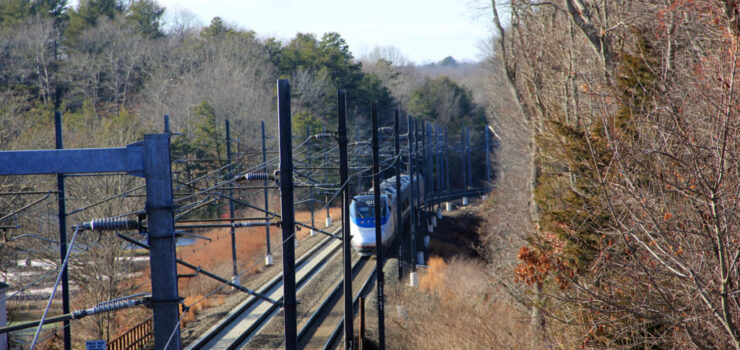Leo Mainelli: CCA Remains Strongly Opposed To The Old Saybrook To Kenyon Bypass
The following letter by Leo Mainelli was published in local newspapers. Mr. Mainelli is President of the Charlestown Citizens Alliance.
Less than five years ago, the US Federal Railroad Administration studied how to improve rail transportation along the New England corridor. Proposed was a huge modification, adding additional rail lines through Connecticut and Rhode Island in order to straighten out the track for the high speed trains, that would purportedly allow for faster train speeds to reduce commuter time. The section of track in question is the Old Saybrook to Kenyon Bypass.
In Charlestown, the proposed Bypass would have run from Charlestown’s western edge to its eastern edge, through the Burlingame State Wildlife Management Area; through other state and private open space and homes in Burdickville Village; across farms, including a four generation farm-to-table operation on the top of Schumankanuc Hill; over Native American tribal land; through the center of the 1,112-acre Carter Preserve (owned by the Nature Conservancy); through the middle of the revolutionary-era Amos Green Farm and adjacent properties protected by conservation easements; through Federally Funded Historic Columbia Heights housing; and then over Historic Kenyon–to reconnect with the existing railroad near the eastern edge of town in the Great Swamp State Wildlife Management Area.
In addition, the Bypass would have crossed the National Wild and Scenic Pawcatuck River several times and was entirely within the areas of the US Fish and Wildlife Great Thicket National Wildlife Refuge and the Wood-Pawcatuck Sole Source Aquifer.
There was great opposition to the Bypass in both Connecticut and Rhode Island. The Charlestown Town Council unanimously opposed the Plan. Rhode Island’s governor, our state legislators, other Town councils, and citizens throughout the region opposed the plan because of its significant environmental and cultural impacts. Because of this opposition, the Bypass was dropped from the Record of Decision for the Tier 1 Environmental Impact Statement.
However, also included in that Record of Decision was the requirement to study rail transportation between New Haven and Providence. This study was just announced as part of what is called the ConnectNEC 2035 that implements the next step of the US Federal Railroad Administration’s NEC (New England Corridor) Future Plan. Through this study the Old Saybrook to Kenyon Bypass was put back on the table.
We ask that the Town Council and our State Government officials inform the Federal Railroad Administration that Charlestown should have a seat at the table on the New Haven to Providence Capacity Planning Study; that there be a complete environmental impact study; and that we are opposed to the Old Saybrook to Kenyon Bypass, and to any upgrade outside the current railroad right of way, because the damage done in Charlestown and other communities along the route, would simply not be worth the money to be spent, and the minimal commuting time to be saved.


August 20, 2021 @ 5:12 pm
Right on, Leo!! Absolutely do not allow this nonsensical future plan to happen! And also, Charlestown must be included in any future plans!! CCA stay vigilant and keep us informed. . .
August 19, 2021 @ 1:24 pm
Mr. Topping and Mr. Chambers,
I could not have said it any better. This is our home.
Thank you,
Lisa Savino
August 19, 2021 @ 12:16 pm
Thankyou all! We can NOT have this!!!
August 18, 2021 @ 8:10 am
Hear hear Mr Chambers …. it is not only our home but our home in a peaceful rural town that many of us including CCA members moved here for that reason and are hoping and fighting to keep it that way. For those who want to live in a more urban or town-like setting there are lots of those for you to choose from, feel free to move to one of them and leave Charlestown rural, thanks.
August 17, 2021 @ 10:09 pm
It’s good to se that CCA continues to be a good, helpful neighbor in Charlestown. Stay vigilant and help protect the lands within the town, private and public. CCA has always embraced the role of Charlestown’s land steward for the benefit of present and future generations. Charlestown is so much more than Ninigret Park or a place for developers to make a buck, or the Federal Government to bolster AMTRAK’s income. This is our home!